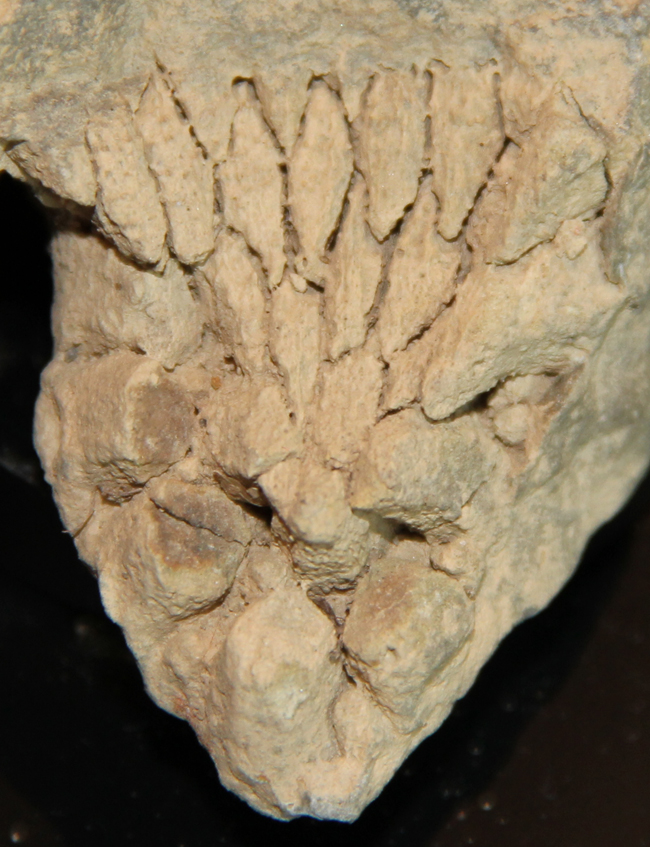In April, I posted some images of an odd structure from some of the fossiliferous siltstones of the Fort Valley. Some of the commenters suggested it was no fossil, but simply a very small scale version of soft-sediment deformation.
Now, another “Fortian” has shown me another example, and this one is better preserved. Its lobes are (apparently) arranged radially, and the individual lobes have a striated appearance. The lobes vary in size, shape, and orientation from the “interior” (broader, rounder lobes) to the “exterior” (thin, diamond-shaped lobes, with longitudinal “ribs” or striations)… It’s almost certainly from Devonian strata.
There’s a 52 mm diameter lens cap in these images to provide a sense of scale.



NOW does anyone have any ideas? Someone please tell me and my neighbors what this thing is!

I’ve seen things similar to this in Devonian rocks on Bullpasture Mountain. I’ve always thought they were some sort of cnidarian, but I’m not sure of that.
It puts me in mind of “Aristotle’s lanterns” in echinoids, but I don’t think I’ve ever seen an example with multiple ranks of teeth, which is what the above looks like.
Hi Callan, it is the mould of part of the base of a tabulate coral, probably Pleurodictyum, though it appears to lack the worm tube that many members of that genus grew upon (you can thank Dave Rudkin for the ID, via facebook; I just thought I would pass it on to you). See, for example, http://www.panoramio.com/photo/1698308
Yup, Definitely a Pleurodictyum mold. Each “finger”, for lack of a better term, was an individual corallite. I find them like this a lot in my local Mahantango formation: http://viewsofthemahantango.blogspot.com/2010/05/i-thought-id-start-my-blog-with-post-on.html